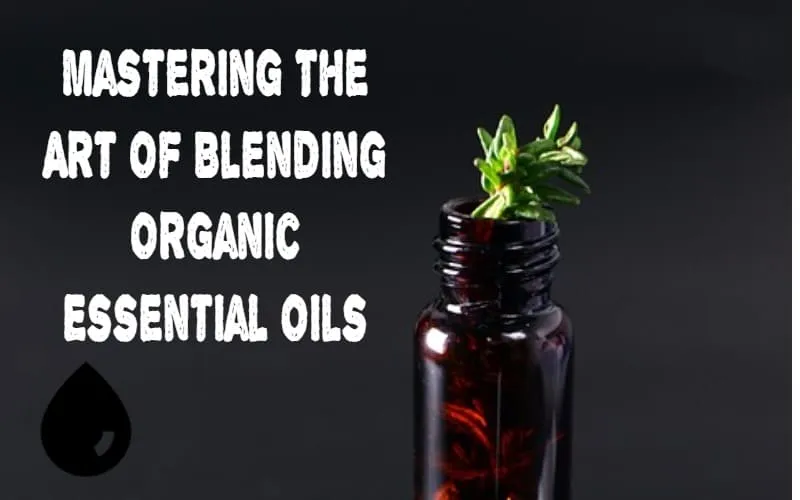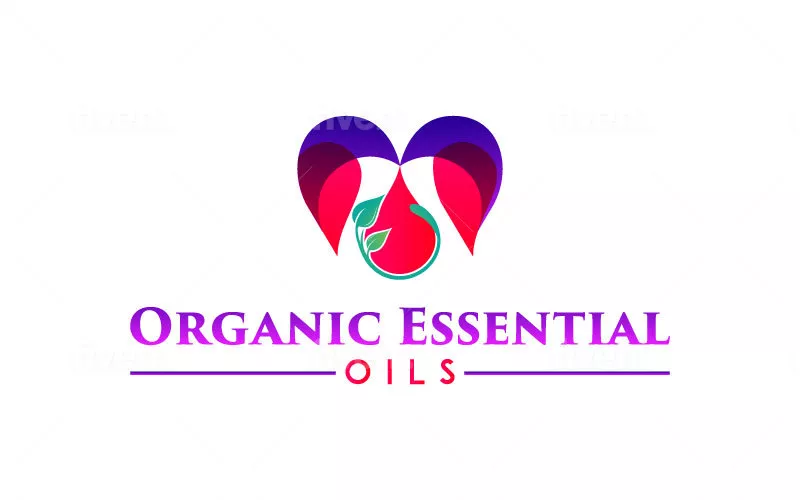Mastering the Art of Organic Essential Oil Massage Recipes
Introduction
Welcome to our comprehensive guide on organic essential oils and their therapeutic benefits. In this article, we will delve into the world of organic essential oils, from understanding their properties to creating indulgent massage oil recipes. Whether you are a beginner or a seasoned enthusiast, this guide aims to equip you with the knowledge to harness the power of organic essential oils for your well-being.
Understanding Organic Essential Oils and Their Benefits
What are organic essential oils?
Organic essential oils are highly concentrated, volatile plant extracts that capture the natural aroma and flavor of the plant. They are extracted through methods such as distillation or cold-pressing, preserving the therapeutic properties of the plants. These oils are free from synthetic additives, pesticides, and genetic modification, making them pure and environmentally friendly.
The benefits of organic essential oils
Organic essential oils offer an array of benefits for physical, emotional, and mental well-being. They possess natural healing properties, promote relaxation, and can be used for aromatherapy, skincare, and holistic wellness. From relieving stress with lavender oil to uplifting moods with citrus oils, the benefits of organic essential oils are diverse and profound.
- Improved Sleep: Organic essential oils like chamomile and lavender can help improve sleep quality and promote relaxation.
- Enhanced Mood: Citrus essential oils, such as lemon and orange, are known for their mood-lifting properties, which can help alleviate feelings of stress and anxiety.
- Immune Support: Eucalyptus and tea tree oils have natural antibacterial and antiviral properties that can support the immune system.
- Pain Relief: Peppermint and eucalyptus oils are commonly used for relieving headaches, muscle aches, and joint pains.
Choosing the Right Carrier Oils for Organic Essential Oil Massage
What are carrier oils and their role in massage oils?
Carrier oils are base oils derived from the fatty portion of a plant, such as the seeds, kernels, or nuts. They serve as a neutral base to dilute essential oils, making them safe for direct application to the skin. Carrier oils play a crucial role in massage oils by enhancing the skin’s absorption of essential oils and providing nourishment and moisture.
Best carrier oils for organic essential oil massage recipes
When selecting carrier oils for organic essential oil massage recipes, it’s essential to consider factors such as skin type, aroma, and therapeutic benefits. Almond oil, jojoba oil, and coconut oil are popular choices for their moisturizing properties and versatility. Jojoba oil, with its resemblance to the skin’s natural oil, is particularly suitable for all skin types, while almond oil is known for its nourishing and softening effects.
Essential Oil Safety and Dilution Guidelines
Understanding essential oil safety
Understanding essential oil safety is crucial for anyone using or considering the use of essential oils. Safety measures must be taken to ensure that these powerful substances are used responsibly and effectively. One of the first and most important safety measures is to always perform a patch test before applying any essential oil to the skin. This is particularly important for individuals with sensitive skin or those who have known allergies. Taking this precaution can prevent adverse reactions and potential skin irritations.
Furthermore, it’s imperative to be aware that some essential oils are not safe for use during pregnancy or for young children. The unique composition of certain oils may pose risks to the health and well-being of the mother and the developing fetus or the delicate systems of young children. Being well-informed about which oils to avoid during pregnancy and around children is an essential part of using essential oils responsibly.
Another critical aspect of understanding essential oil safety is recognizing the contraindications of specific oils. Every individual is unique, and what works well for one person may not be suitable for another. Understanding which essential oils may have adverse effects when combined with certain medications or health conditions is vital for safe and effective usage. Creating a comprehensive knowledge base of contraindications can enhance the overall safety of incorporating essential oils into daily routines.
Dilution guidelines for organic essential oil massage recipes
When it comes to incorporating organic essential oils into massage recipes, dilution is a fundamental aspect that ensures both safety and efficacy. Proper dilution ratios play a crucial role in harnessing the full potential of essential oils while minimizing the risk of adverse reactions. For adults, a widely accepted guideline is to use 2-3 drops of essential oil per teaspoon of carrier oil, but it is important to tailor the dilution to suit the specific needs of children and individuals with heightened sensitivity.
Moreover, the ideal dilution ratios may vary depending on factors such as the recipient’s tolerance levels and the intended therapeutic purpose of the massage oil. It’s imperative to recognize that personalized dilution guidelines are paramount in order to achieve the desired benefits without compromising safety. By understanding the nuanced aspects of dilution, individuals can confidently navigate the realm of organic essential oil massage blends and fully appreciate the art of precision in creating customized, purposeful formulations.
Creating Organic Essential Oil Massage Oil Recipes
Basic principles of blending essential oils
When blending organic essential oils for massage oil recipes, it’s essential to understand the aromatic profiles and therapeutic benefits of each oil. Some oils, like lavender and chamomile, are calming and soothing, while others, such as eucalyptus and peppermint, are invigorating and refreshing. By combining complementary oils, you can create balanced blends that cater to specific wellness needs.
Top organic essential oil massage recipes
Organic essential oil massage recipes offer a delightful and therapeutic way to enhance overall well-being. By carefully selecting the right essential oils and carrier oils, you can create blends that cater to various wellness needs, from relaxation to muscle relief. Let’s dive into some of the top organic essential oil massage recipes that guarantee a luxurious and rejuvenating experience:
- Relaxation Blend: This blend combines lavender, chamomile, and ylang-ylang essential oils with nourishing almond oil. The calming properties of lavender and chamomile work synergistically to promote relaxation, while ylang-ylang adds a sweet, floral aroma that uplifts the spirits.
- Invigorating Citrus Mix: A refreshing combination of lemon, orange, and grapefruit essential oils with lightweight jojoba oil. This energizing blend is perfect for revitalizing tired muscles and providing an uplifting sensory experience.
- Deep Tissue Relief Recipe: Incorporating eucalyptus, peppermint, and rosemary essential oils with coconut oil, this blend targets muscle tension and soreness. The cooling sensation of eucalyptus and peppermint, combined with the analgesic properties of rosemary, provides soothing relief for deep tissue massage.
These recipes include detailed instructions for creating and using the blends, ensuring a harmonious and therapeutic massage experience. Experiment with different combinations and ratios to discover the perfect organic essential oil massage recipe tailored to your individual needs.
Customizing recipes for different needs
When it comes to customizing organic essential oil massage oil recipes, understanding the unique needs and preferences of individuals is essential. Tailoring the recipes to address specific wellness goals and personal preferences can significantly enhance the effectiveness of the massage experience. Let’s delve into some valuable considerations for customizing recipes for different needs:
- Identifying Key Wellness Goals: One of the crucial steps in customizing massage oil recipes is identifying the specific wellness goals of the individual. Whether it’s stress relief, relaxation, or muscle tension relief, understanding the primary objective enables us to select the most suitable essential oils and carrier oils.
- Personalized Aromas: Offering a selection of aromatic profiles allows individuals to choose scents that resonate with their preferences. Whether it’s a floral, citrusy, woody, or earthy aroma, the option to personalize the scent adds a thoughtful touch to the massage experience.
- Sensitivity and Allergies: Taking into account any sensitivities or allergies is crucial in customizing recipes. By understanding potential reactions to specific ingredients, we can ensure that the massage oil blends are safe and enjoyable for each individual.
- Adjusting Oil Concentrations: Some individuals may prefer a lighter oil blend, while others may benefit from a more concentrated formula. By adjusting the concentrations of essential oils and carrier oils, we can create personalized blends that cater to individual needs.
Application and Techniques for Organic Essential Oil Massage
Methods of application for organic essential oil massage
Organic essential oil massage blends can be applied using various methods, each offering unique benefits and catering to different massage objectives. Understanding these application methods empowers you to optimize the efficacy of organic essential oils in massage practices. Let’s explore the detailed techniques of applying organic essential oil massage blends:
- Effleurage: This technique involves long, sweeping strokes over the body, which promotes relaxation and helps in distributing the essential oils evenly across the skin.
- Petrissage: By using kneading and squeezing motions, petrissage aids in enhancing circulation and releasing muscle tension, making it an effective method for relieving muscular discomfort.
- Friction: Friction technique involves the application of deep pressure in circular motions, which stimulates blood flow and helps in targeting specific areas of muscular discomfort or tension.
Furthermore, it’s essential to consider the individual preferences and needs of the client when selecting the appropriate application method. By tailoring the application to the client’s desired outcomes, the benefits of organic essential oil massage blends can be maximized.
Effective massage techniques
Effective massage techniques
- Swedish Massage
- Aromatherapy Massage
- Deep Tissue Massage
Effective massage techniques play a pivotal role in maximizing the benefits of organic essential oils. From Swedish massage to aromatherapy massage, applying appropriate pressure and using targeted movements can enhance the absorption of oils, stimulate circulation, and induce deep relaxation. Through skillful and conscious application, organic essential oils can elevate the overall massage experience.
Additionally, incorporating the following techniques can further enhance the effectiveness of organic essential oil massage:
- Effleurage
- Petrissage
- Fanning
Effleurage involves long, sweeping strokes to warm up the muscles, while petrissage uses deep kneading to release tension and improve blood flow. Fanning entails the use of fingertips to lightly and rhythmically tap the skin, promoting relaxation and optimizing oil absorption.
Conclusion
As we conclude this enriching guide, we hope you’ve gained valuable insights into the world of organic essential oils and their use in massage applications. Embracing the therapeutic potential of organic essential oils opens doors to holistic well-being, relaxation, and personalized wellness experiences. Whether you are crafting bespoke massage oil recipes or exploring diverse application techniques, organic essential oils offer a myriad of possibilities for nurturing the body, mind, and spirit.

